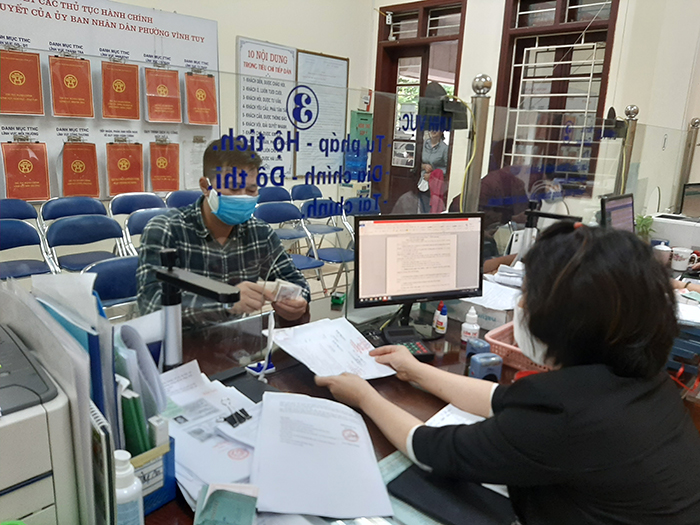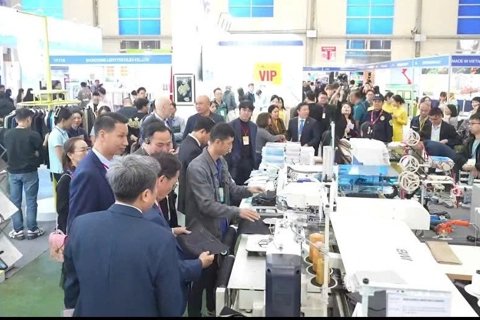Hanoi ready to pilot urban administration model since July 1
Mechanisms are in place to ensure democratic and supervisory rights of the people as ward-level people’s councils are set to be abolished under the pilot urban administration model.
Hanoi is now ready to pilot the urban administration model in 12 districts and Son Tay Town on July 1, the timeline stipulated under the parliament’s resolution.
| Citizen at Vinh Tuy Ward People's Committee (Hai Ba Trung District). Photo: The Hanoi Times |
The city's preparation has been conducted right after the 14th National Assembly ratified Resolution No.97/2019/QH14 on piloting the urban administration model in Hanoi in 2019, in which specific tasks and responsibilities have been assigned for each department, unit, and district.
Under the plan, each unit is tasked with assessing the current state of staff and providing suggestions for the finance-operation mechanism of ward-level apparatus.
Under the pilot administration model, Hanoi will abolish the people’s council in 177 wards of 12 districts and Son Tay Town. As such, the metropolitan area will have only two levels of people’s representation: city and district. Rural areas still retain the model of three levels of people’s representation (city, district, and commune).
This pilot civil service model is expected to streamline the local apparatus, accelerate the decision-making process and solve urgent issues faster, as well as better define leaders’ responsibilities.
The Hanoi People’s Committee has assigned the Department of Planning and Investment to work with related districts in assessing the possible hurdles in the process while pushing for greater decentralization in making decisions at district- and ward-level people’s committees.
In response to a concern that whether people’s democratic and supervision rights continue to be maintained without ward-level people’s councils, a representative of the Department of Internal Affairs, who requested anonymity, said the public could exercise their rights directly or indirectly via different social organizations and entities in the locality.
“Party bodies, Vietnam Fatherland Fronts, socio-political organizations, and the locals would supervise state agencies’ compliance to the constitution and laws; district-level people’s councils will ensure ward-level people’s committees adhere to the tasked designated to them,” he noted, saying twice per year before the regular session of the district-level people’s councils, leaders of the ward-level people’s committees are expected to hold dialogue with citizens to address their concern.
Bui Dinh Thai from the Department of Internal Affairs said to date, all wards under 12 districts and Son Tay Town have set up a plan to carry out the urban administration model, adding “no concern or difficulty has been reported so far.”
Having completed the process of reassigning staffs from ward-level people’s councils to units and departments in the district, Head of the Internal Affairs Office of Long Bien District Nguyen Thu Hang said the locality “stands ready to kick start the urban administration since July 1.”
At Dong Da District, Vice Deputy of the Internal Department Vu Tra Vinh said all 21 wards under the district have completed the preparation process.
“We are waiting for detailed instruction on the working mechanism between ward-level agencies to ensure the urban administration model is implemented as planned,” she stated.
|











